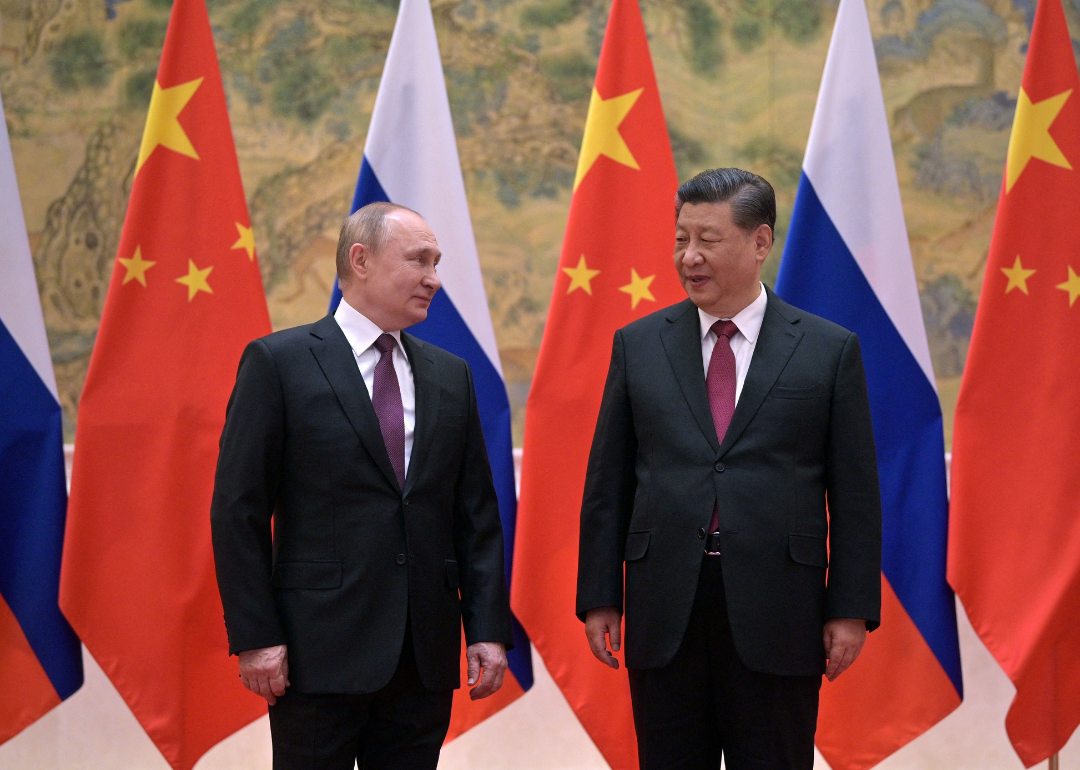Keystone-France/Gamma-Rapho via Getty Images The relationship between Russia and China is a decadeslong story of push and pull between the world’s largest Communist superpowers. It started as a younger brother-elder brother relationship, with China looking to Russia for guidance and support in the mid-20th century as the Chinese Communist Party took hold and began mapping out its rise. This relationship began to shift in balance following the dissolution of the Soviet bloc and has continued to vacillate in either country’s favor ever since. Ideological differences, notably regarding interactions with Western countries and other key pillars of communism, left both countries in cold contact for several stretches of time. Border disputes have led to violence. Ultimately, collaboration on gas and oil trade and the development of the Belt and Road Initiative–a widespread and complex infrastructure initiative aimed at connecting East Asia with Europe–have kept the two countries in a public-facing partnership. Several recent events, however, have left the future of Sino-Russian relations in question. On the one hand, the two nations renewed the Sino-Russian Treaty of Friendship in June 2021, and even more recently issued a joint statement on strengthening international relations, following Russian President Vladimir Putin’s visit to China in February 2022. On the other hand, China has been reluctant to publicly support Russia’s invasion of Ukraine. Short of formally denouncing the unprovoked invasion, China has seemingly made clear that its silence on the matter is contingent on there being no nuclear escalation; the country has also refused to recognize the recent annexation of four Ukrainian territories by Russia. Understanding the evolution of these two nations’ relationship is a key factor in examining both the impact of communism on the world stage and the U.S. and other allied nations’ position regarding the ongoing war in Ukraine. Stacker investigated the relationship between Russia and China during the last century, using a variety of historical, news, and other sources. By looking back at the ebb and flow of Sino-Russian relations, it may be possible to understand better where both nations are headed in the coming years. You may also like: Nobel Prize history from the year you were born Oct. 2, 1949: Soviet Union recognizes the People’s Republic of China, one day after its proclamation in Beijing swim ink 2/Corbis via Getty Images The Chinese Communist Party formally established the People’s Republic of China on Oct. 1, 1949, following a long-running civil war between the CCP and the ruling Nationalist Party establishment. The next day, Russia’s Deputy Foreign Minister Andrei Gromyko gave a speech over public radio recognizing the legitimacy of the new republic “with the proposal to establish diplomatic relations between the People’s Republic of China and the Soviet Union.” The Soviet Union had already begun to position itself to gain economic and diplomatic advantages from the triumph of the CCP by aiding the party in its fight for power. Feb. 15, 1950: China and the Soviet Union sign Treaty on Friendship, Union, and Mutual Assistance Sovfoto/Universal Images Group via Getty Images The Soviet Union quickly made good on its intentions to solidify a relationship with the People’s Republic of China, signing the Treaty on Friendship, Union, and Mutual Assistance within the first five months of the Republic’s establishment. The treaty established a relationship in which China was the “younger brother” to Russia’s “elder brother,” a distinction buoyed by China’s new position on the national stage. Through the agreement, the Soviet Union provided significant economic, military, and technological aid to the burgeoning Republic, ultimately playing a central role in shaping China’s new economy and infrastructure. 1950-1953: China and the Soviet Union collaborate to help communist North Korea in its war with South Korea and the West
Russia and China in the last 100 years: The love-hate relationship between the world’s largest communist powers








